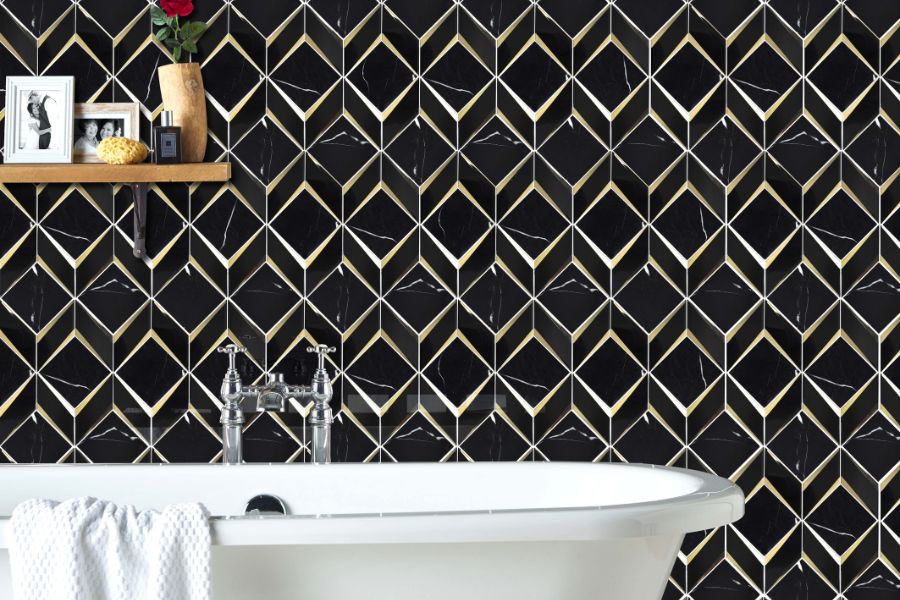Product & Trends A New Decade for the Roaring Twenties: Art Deco Style Tile
Jul 31, 2023July 31, 2023
Art Deco style is having a hot moment in interior design. With bold geometric forms, elegant curves, clean lines, and classical influences, Art Deco recalls a glamorous, sophisticated lifestyle. Interior design schemes have been heavy on neutrals these past few years, but now, people are beginning to stray from strictly neutral palettes. Even the neutral palette lovers want to inject a playful punch into their design schemes — and Art Deco style is anything but neutral. A little bit of Art Deco can go a long way, but the beauty and symmetry of a dose of Art Deco design can evoke a visually exciting, fun, and modern vibe in interiors.
A Brief History of Art Deco
 Paris, France, 1910s was the setting for the birth of this new, modern design style. Short for Arts Décoratifs, the name came from the Exposition Internationale des Arts Décoratifs et Industriels Modernes held in Paris in 1925.(The actual term art déco did not appear in print until 1966!) Europe was rebuilding from WWI, the automobile was still considered new, and the expo showcased high technology for the time, as Europe (and the rest of the world) entered a new age focusing on improvement and performance.
Paris, France, 1910s was the setting for the birth of this new, modern design style. Short for Arts Décoratifs, the name came from the Exposition Internationale des Arts Décoratifs et Industriels Modernes held in Paris in 1925.(The actual term art déco did not appear in print until 1966!) Europe was rebuilding from WWI, the automobile was still considered new, and the expo showcased high technology for the time, as Europe (and the rest of the world) entered a new age focusing on improvement and performance.
The emergence of Art Deco was an embrace of the machine age but was also closely connected with the rise in status of decorative artists, who until late in the 19th century were simply considered artisans rather than artists. Parisian department stores and fashion designers also played a large part in the rise of Art Deco, along with businesses such as the silverware company Christofle, jewelers like Louis Cartier and Boucheron, and glass designer Renee Lalique who began designing their wares in the more modern styles.
Art Deco was not a single style but a collection of different and sometimes contradictory styles and was associated with both luxury and modernity. Nothing about Art Deco was cheap — it was used to decorate the first-class salons of ocean liners, deluxe trains, skyscrapers, and grand movie palaces worldwide. (American skyscrapers marked the summit of the Art Deco style, becoming the most recognizable modern buildings in the world.)
The Look of Art Deco
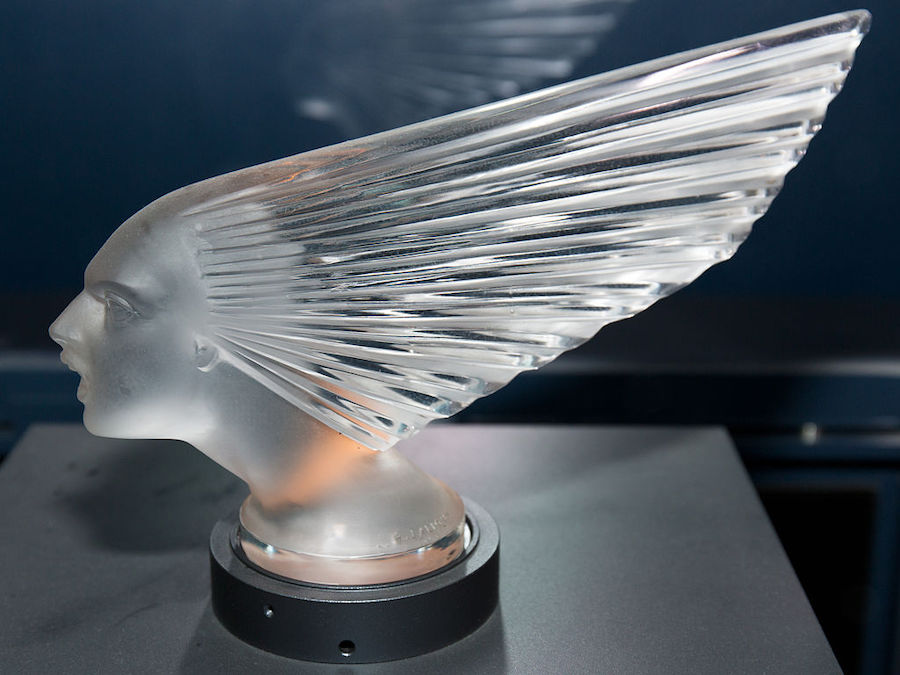 Hood ornament Victoire by René Lalique, 1928. (Image: Morio, CC BY-SA 3.0 via Wikimedia Commons)
Hood ornament Victoire by René Lalique, 1928. (Image: Morio, CC BY-SA 3.0 via Wikimedia Commons)
Art Deco easily evokes a mental picture of the roaring twenties and The Great Gatsby. The style was a reaction against Art Nouveau and was all about sharp angles and edges to represent industry and progress. Design elements in Art Deco architecture and design embrace accurate and technical geometry that emphasizes the precision of machines paired with stylized curvatures that express speed and movement. The style took inspiration from various influences, including Egyptology (there was widespread interest in archeology at the time), Cubism, Modernism, and Futurism. Art Deco style was high-end, incorporating expensive materials, both manufactured (like Bakelite) and natural (jade, silver, obsidian, etc.) The design style weaves in bold colors, fluted details, elegant curves, geometric patterns, sunburst patterns, and decadent accents (like metal) — all of which lend perfectly to tile design!
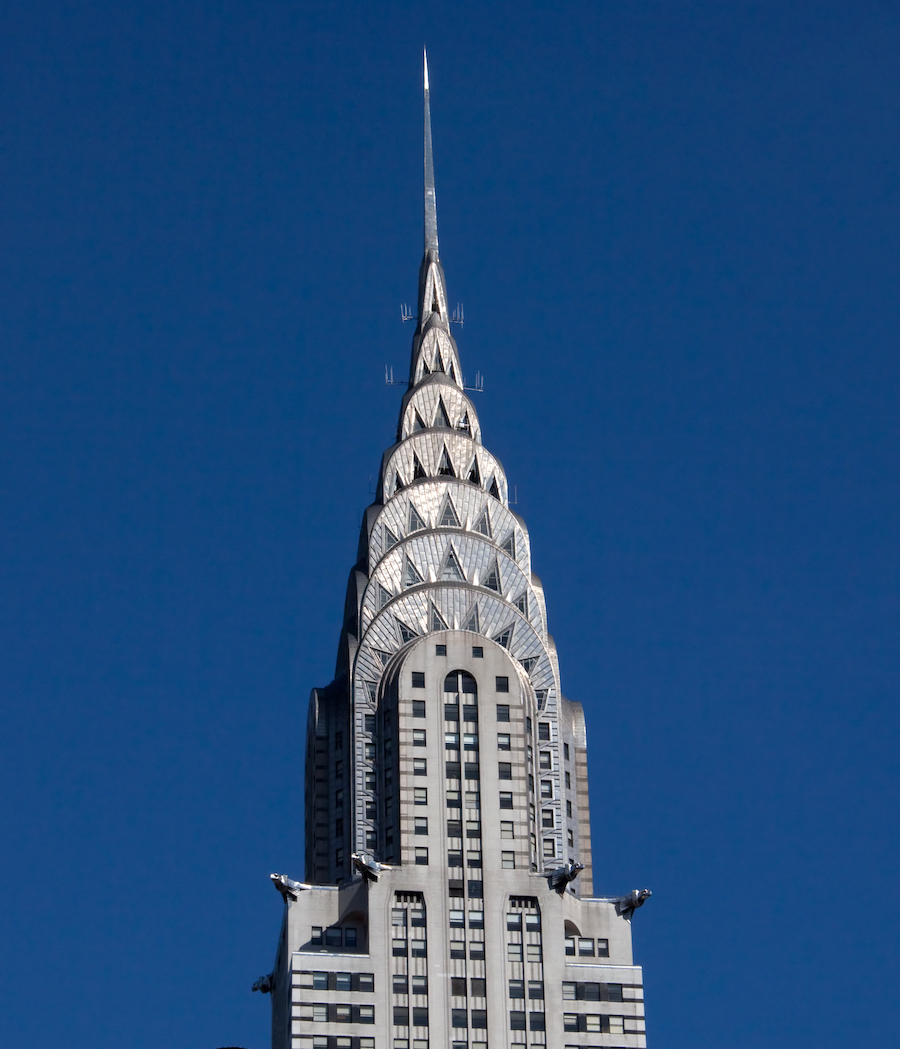 Art deco is best found in the US in furnishings and big city high rises of New York and Los Angeles. The iconic Chrysler Building's boldly curving top was designed to emulate Chrystler's iconic automotive fenders!
Art deco is best found in the US in furnishings and big city high rises of New York and Los Angeles. The iconic Chrysler Building's boldly curving top was designed to emulate Chrystler's iconic automotive fenders!
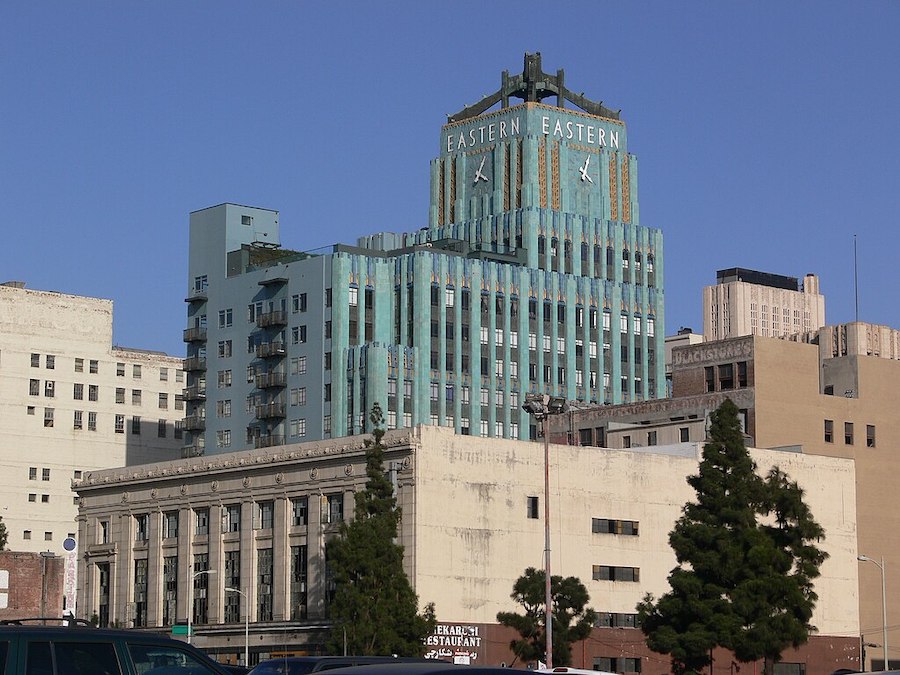 The Eastern Columbia Building in Las Angeles is clad in glossy turquoise terracotta trimmed with deep blue and gold trim. The façade is decorated with a wealth of art deco motifs—sunburst patterns, geometric shapes, zigzags, chevrons ,and stylized animal and plant forms. (Photo: Andreas Praefcke, CC BY 3.0 via Wikimedia Commons)
The Eastern Columbia Building in Las Angeles is clad in glossy turquoise terracotta trimmed with deep blue and gold trim. The façade is decorated with a wealth of art deco motifs—sunburst patterns, geometric shapes, zigzags, chevrons ,and stylized animal and plant forms. (Photo: Andreas Praefcke, CC BY 3.0 via Wikimedia Commons)
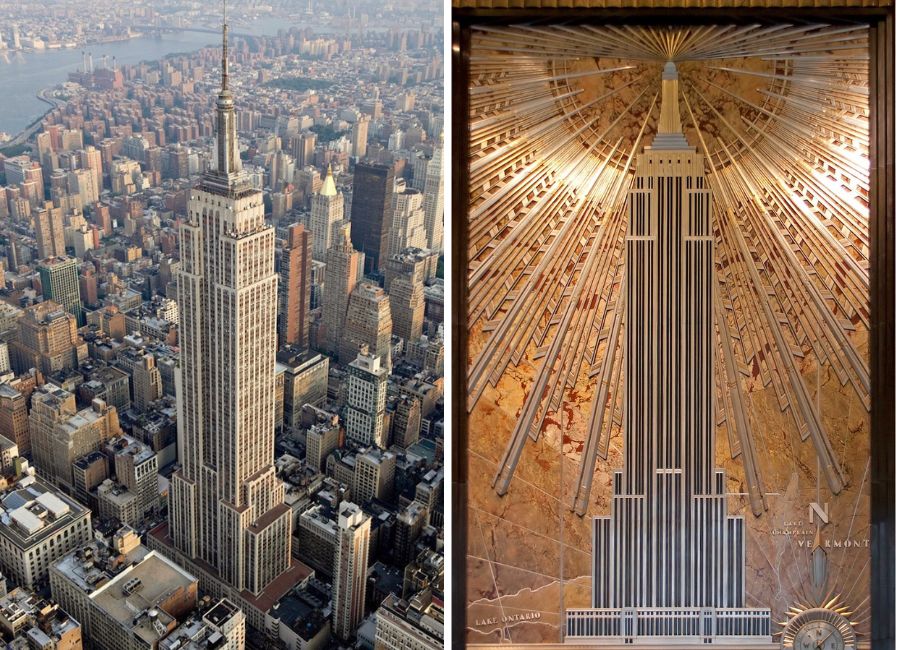
The Empire State Building, another icon of Art Deco architecture, was the first building in the world to be more than 100 stories tall. In the west end of the lobby (shown right) is an aluminum relief of the skyscraper as it was originally built . The relief contains an embossed outline of the building, with rays radiating from the spire and the sun behind it. (Image: Tony Hisgett from Birmingham, UK, CC BY 2.0 via Wikimedia Commons)
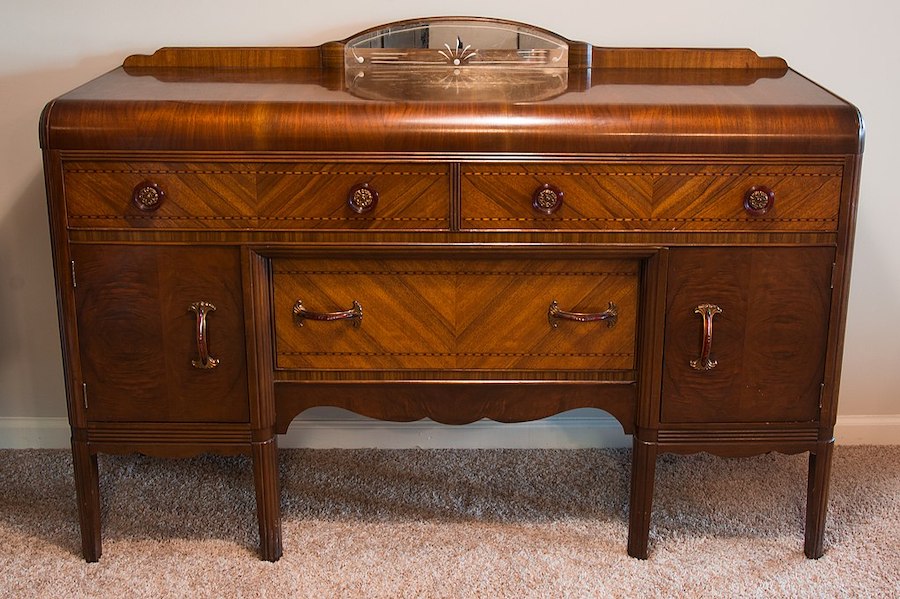
The waterfall design was one of the most prevalent variations of Art Deco in furniture, primarily created for the mass market and for bedroom suites. Waterfall dressers and vanities with large round mirrors are still favorites among vintage enthusiasts today. (Waterfall sideboard image: Ɱ, CC BY-SA 4.0 via Wikimedia Commons)
Crossville Studios Tiles That Align With the Art Deco Trend
Art Deco tiles have been a staple in tile design for a long time (they became a popular exterior cladding material in the Art Deco era due to the bold, rich glaze colors that would endure). The striking colors, patterns, and geometric shapes make these tiles timeless. In the roaring 2020's, we see a return to geometry, especially in tile. Mirrors and metals reign supreme, and mix with a luxe color palette. Metallic accents may be in the tiles themselves or can be achieved by using Schluter trims as design elements throughout or through the use of metallic grout. The end result is a restrained and elegant opulence.
Without a doubt, Art Deco is one of the year's hottest flooring and wall covering styles. Crossville Studios offers a plethora of Art Deco tile styles — here’s look at just some of them.
Highland Park
The bold, sharp geometric pattern from the Highland Park wall tile collection offers a complimentary white or black marble, along with reflective glass accents to achieve a simple yet elegant look.Yin + Yang Natural Stone
Our Yin + Yang natural stone tiles are the perfect vehicle for creating herringbone and chevron patterns, classic Art Deco design mofifs!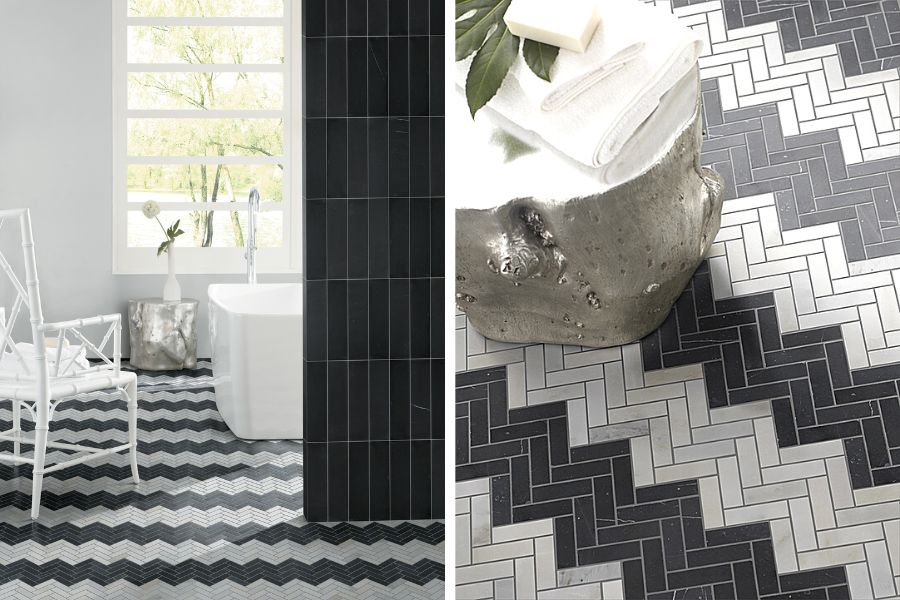
Sideview Glass Mosaics
The richly faceted metallics of our Sideview Glass mosaic tile collection reflect eye-catching style from every angle — a brilliantly modern take on razzle-dazzle, art deco grandeur.
Tintoertto
The symmetrical, curvilinear design of our Tintoretto wall tiles is classic Art Deco inspiration.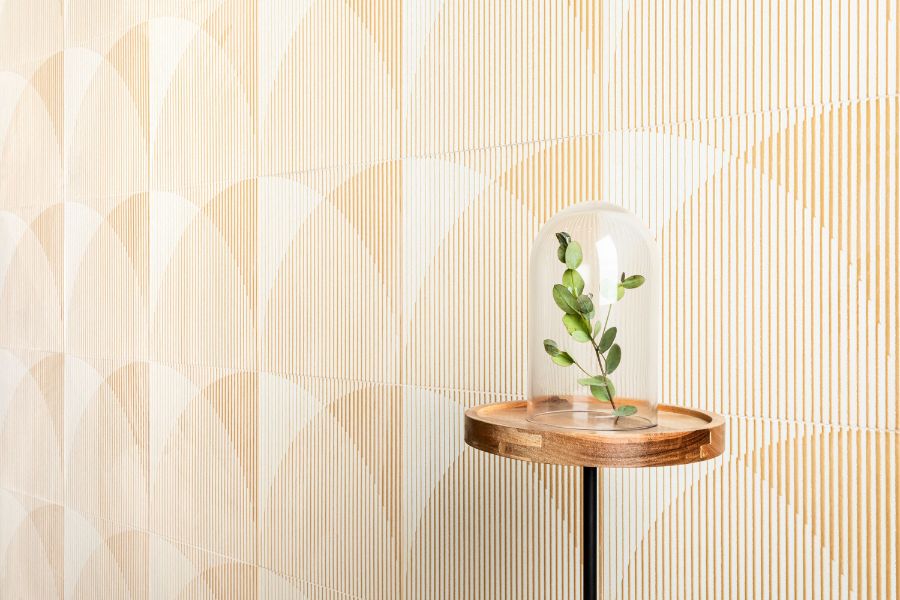
Spices
The fish scale pattern is a typical Art Deco motif, along with chevrons, zigzags, waves, and sunbursts. Our Spices collection offers intense colors with a slightly textured, glossy surface that has all of the passion and richness of a hand-made tile.
Spark Joy
Energetic sunbursts make our colorful Spark Joy tile collection ideal for creating a playful wall covering or flooring.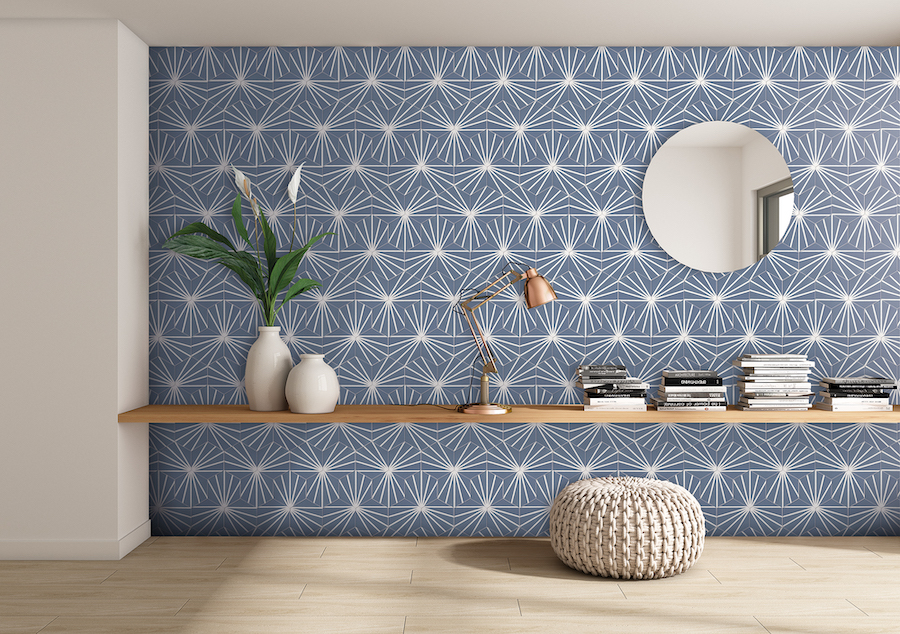
Marmos Fairmont
Real brass accents interspersed with marble mosaics give our Marmos Fairmont collection sophistication and opulance, hallmarks of Art Deco design.
Chain Link
Our Chain Link collection will make for a stunning focal point with its symmetrical, geometric representation of gold chains embedded in marble.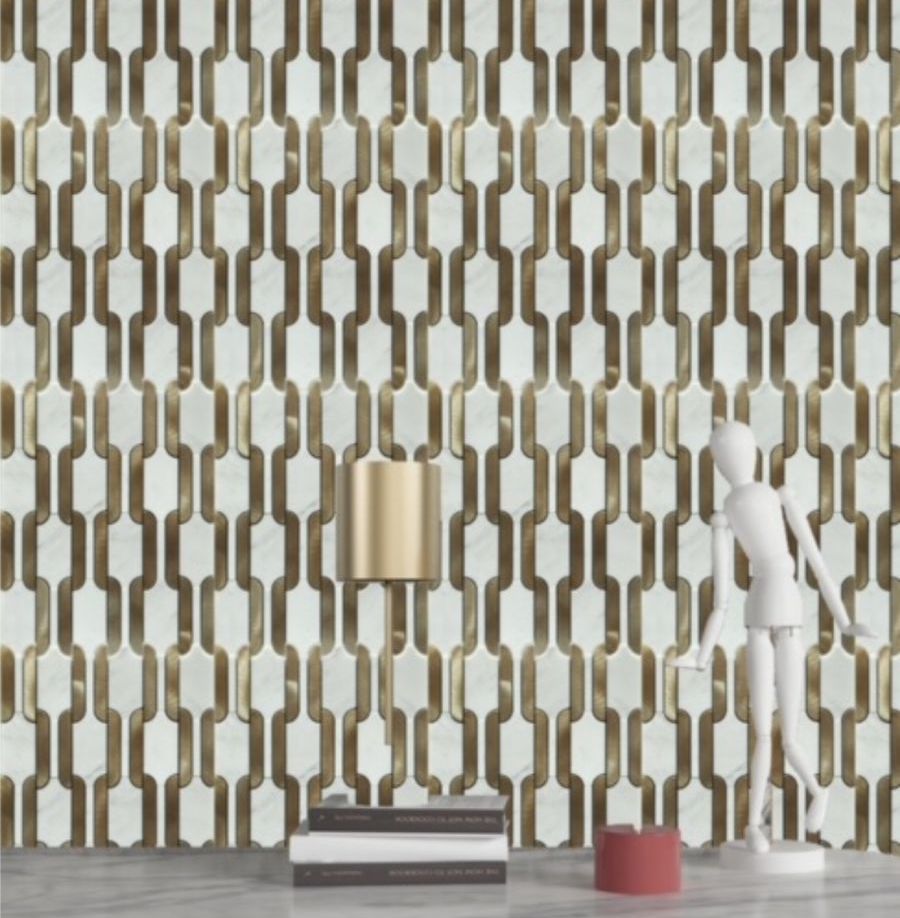
Elipse
Classic geometric curves in our Elipse wall tile collection will make your Art Deco dreams come true! Available in six bold color combinations that can be mixed and matched for a playful effect.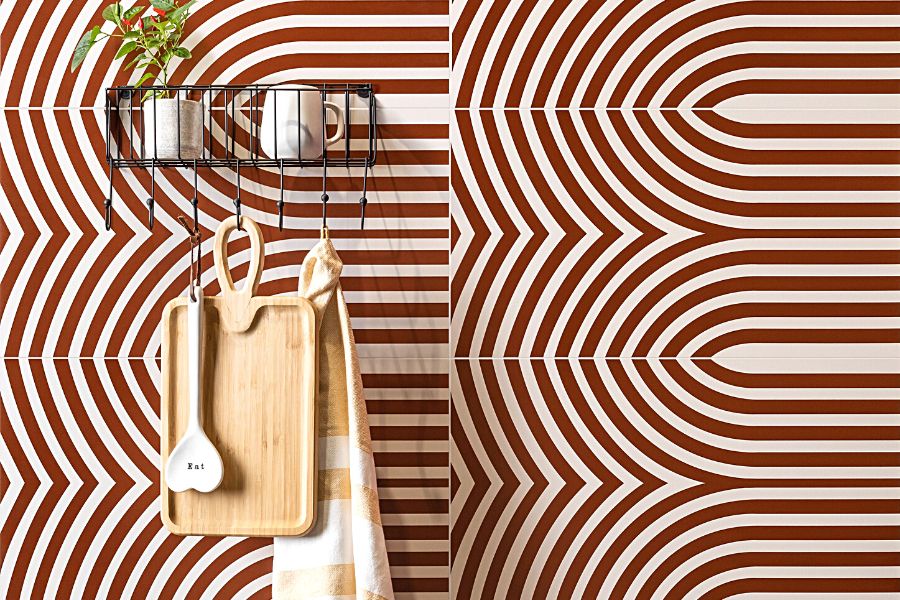
Raffino
With echoes of Art Deco styling, Raffino is a sleek ceramic wall tile collection inspired by the elegance of natural stone and three-dimensional surfaces.
Metallic
Art Deco shapes and elements abound in this light-reflective Metallic wall tile collection. The ceramic metal-look line offers contoured tiles in waves, hexes, flutes, and more.



